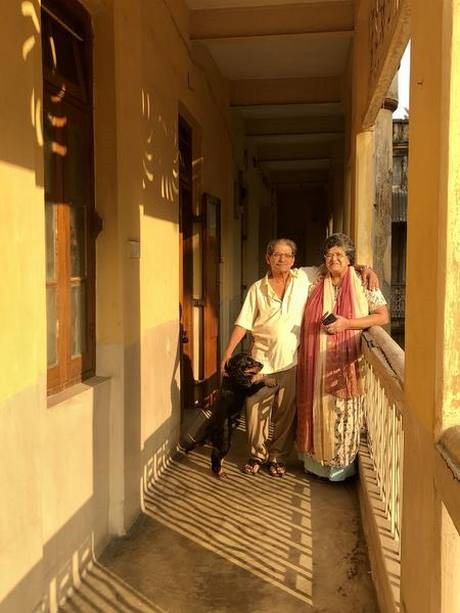A leftover of time but living testament to the Parsis in Kolkata.
“Manackjee Rustomjee Dharmashala for Parsi travellers” — the inscription in an old-fashioned font on the doorway transports one to the days when accommodation wasn’t pre-booked online and travel itself was fraught with uncertainties.
Article by Bishwanath Ghosh | The Hindu

“Once upon a time tourists came to Kolkata, spent a couple of days here and went on to Darjeeling and the northeast. But now many cities are directly connected to Bagdogra (gateway to the northeast), so people hardly come to Kolkata,” says Dara Hansotia, who hails from Ahmedabad and has been the manager of the dharmashala since 2014.
“Also, now when people come to the city on work, they are put up in hotels by their companies,” he says. Even then, according to Mr. Hansotia, the facility, with 13 operational rooms, hosts about 30 people every month. A double room costs ₹1,150 and single ₹950, inclusive of breakfast.
Though the rooms are available only to the Parsis, the dining hall is open to all: just about anyone can walk in to get a flavour of Parsi cuisine, provided they have placed their order well in advance with Mr. Hansotia, who loves cooking and briefly looked after catering at the dharmashala before being appointed its manager.
Does he remember this place being ever packed to capacity? “On two occasions,” Mr. Hansotia’s wife Meher replies. “Once in 2014, when three Parsi weddings were held simultaneously in the city, and again in 2017, when a tournament of five Parsi cricket teams was held in Kolkata. One was the local team, and of the remaining four, one stayed at the fire temple and three with us.”
The dharmashala was originally built in 1909 in the memory of Manackjee Rustomjee by his friends living in Bombay, Calcutta and China. The rent was eight annas a day. In 1936, that building was demolished and the present structure constructed by architect and civil engineer Ardeshir Dinshaw Vehvalvala, and the rent hiked to 12 annas. Today it is run by a trust called the Calcutta Zoroastrian Community’s Religious and Charity Fund.
According to Mr. Hansotia, there were about 3,000 Parsis in Kolkata until a few decades ago, and now the number stands at around 400, almost half of it consisting of the elderly. As one of the nodal persons of the community, he is also expected to conduct funerals. At the Tower of Silence, he says, solar panels are used these days to disintegrate a body because vultures have almost disappeared.
Mrs. Hansotia believes that focus on career is partially responsible for the dwindling population. “Youngsters these days don’t want to marry early because they want to build a career, and by the time they are ready to marry there is no suitable candidate within the community. We are quite horrified about the future,” she says.

